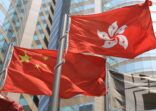So far, no foreign fund managers have launched any China-focused equity or fixed income funds to onshore investors through their WFOEs, despite the green light by the Chinese regulators in July. (Eligible WFOEs can register as private securities fund managers through the Asset Management Association of China and wait 20 days for approval).
Tung pointed out the challenges of doing so: “If the managers are not able to launch products in six months after the registration, the [private securities fund] license will be suspended.”
“[The fund managers] are not rushing to apply for the license unless they are very confident that the investment platform and the people are ready,” he told FSA.
In regards to UBS AM, a full team of portfolio managers, legal and compliance as well as operations, sales and marketing and risk management, totaling at least 20 people, will be gradually in place ahead of the product launch, he noted.
“We need to spend a lot of time training up people. The biggest challenge right now is to set up the IT infrastructure,” Tung said. Still, the asset management side can leverage on the existing platforms in the mainland, as UBS has operations for the wealth management, brokerage and futures, he continued.
“In the long term, of course we want to compete with the local market when we build the A-share capability. At the same time, we have strength in H-shares. We will emphasise on both the A- and H-shares, and we are also considering fixed income.”
He added that the firm has managers such as Bin Shi, the Hong Kong-based lead portfolio manager for China equities strategies, who could play a role with onshore products.
Tung didn’t comment whether Shi would be relocated to Shanghai, although he said the portfolio manager of the new products will be in the firm’s mainland office.
Merging mainland platforms
The firm now has two WFOEs, one in Beijing and one in Shanghai. The former, set up in 2011, acts as a private fund manager for real estate, private equity and infrastructure investment.
The latter was granted the Qualified Domestic Limited Partner (QDLP) license in March 2015, with $100m of quota for non-retail investors to buy offshore products.
Roughly 15 hedge funds, private equity firms and asset managers were granted the QDLP quota, but the issuance has stopped since October last year, after the government clamped down on capital leaving China.
“What we are doing now is the conversion from the QDLP company into one that comprises both QDLP and an investment management businesses,” Tung said.
The firm expects to complete the conversion in the first half of next year and then to launch new products in the latter half, he said.
Scaling up
UBS decided to merge the QDLP and IM WFOE into one platform instead of two separate legal entities, he noted.
“Asset management is always about scalability of the business. By doing so, we can leverage a lot on capital and people,” he explained.
UBS AM has already a mainland joint-venture, UBS SDIC Asset Management, with partners including China’s State Development & Investment Corp and Taikang Insurance.
“We own 49% but we have very close relationship. I am sitting on the board there and we are looking at everything. The idea is that we can bring over some strategies from UBS SDIC to the WFOEs as well,” head of Asia Pacific Rene Buehlmann told FSA in an earlier interview.
Tung said the focus of the JV and the WFOE are quite different, and he does not expect direct competition between the two firms.
“UBS SDIC focuses more on the local style products, which are more retail oriented and tend to have higher volatility.”
The UBS AM products are “more suitable for institutional and high net worth clients”, he said.
“But we can do collaborations. For example, UBS SDIC has the sales team and distribution network, and we can rely on them to help on product distribution.”

















